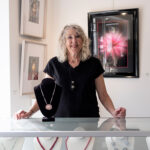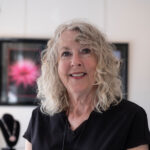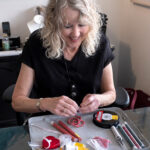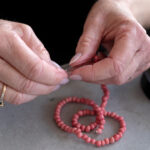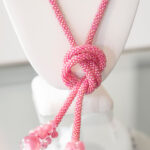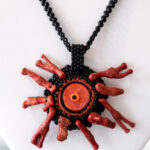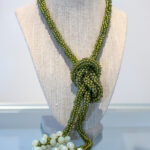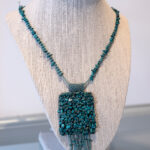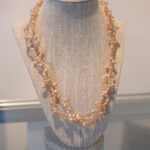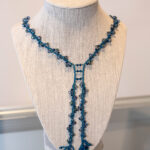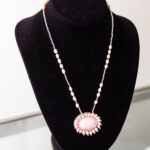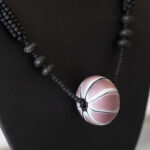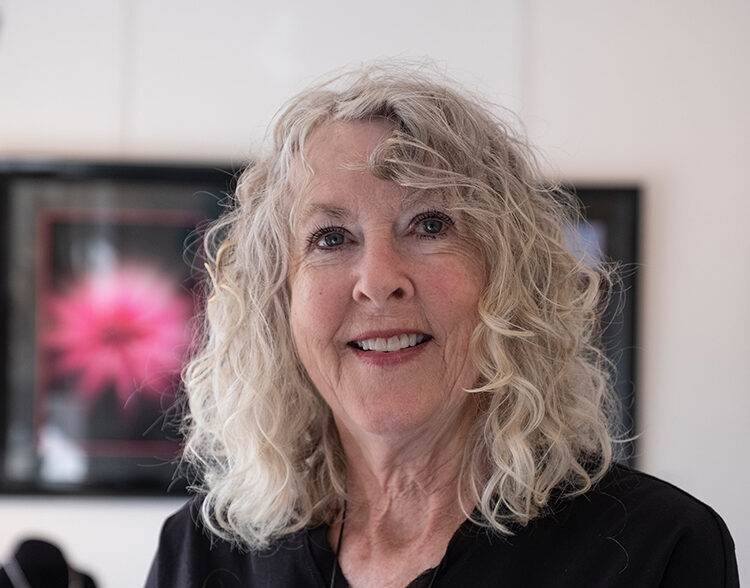
For the past 20 years, Deborah Morrell Polackwich has been creating one of the world’s oldest art forms, one that is said to predate even cave paintings – jewelry.
Originally from Maine, Polackwich moved to Vero Beach 43 years ago with husband Alan, an attorney, and their children after he accepted a position here and, she says, “we wanted to get away from the cold.”
In Vero, Polackwich divides her time between her home-based studio and Gallery 14; she is a founding co-owner of the gallery, which opened 15 years ago. The couple still has a house on a small island in Maine that has been in the family for generations, and which they are in the process of renovating.
Polackwich says her interest in bead and jewelry work started when she worked on crafts with her children, and she eventually began taking classes in jewelry making.
Polackwich graduated from Colby College in Maine, where she majored in art, and later studied at Bennington College in Vermont, and at the Arrowmont School of Arts and Crafts in Tennessee, a national center of contemporary arts and crafts.
Polackwich makes her jewelry using a vast array of items, including beads from all over the world that come in various shapes, colors and sizes. Her pieces are often highlighted with an especially striking pendant, that she fashions into the strands with bead embroidery, sometimes backing them with hand-sewn suede.
The pendants are one-of-a-kind objects, such as natural stones, unusual beads and even a fossilized oyster, that she picks up here and there. She holds them aside until inspiration pulls them from the drawer, and a unique and exquisite necklace takes shape in her expert hands.
The pendants are often flat-bottomed, opaque gemstones, called cabochons, that have been shaped and polished, as opposed to faceted. The resulting form is typically a convex obverse (dome shaped) with a flat reverse. Some of the shells she employs are clear, which can give the interesting effect of space within the necklace.
Polackwich explains that rather than plan what to create with the materials at hand, “it just evolves.”
As a seasoned designer with a creative mind, Polackwich works her way through the design process, determining how best to determine the layout of the piece based on the shape of the beads, the color she wants it to be, and the number of strands she plans to weave together, anywhere from one to eight.
Each piece of jewelry is as different as the beads themselves, which can be made of anything from glass or ceramics to natural stones. And, to the delight of her clients, she is always experimenting with new ideas and techniques.
“I find most of the beads in West Palm Beach or in Maine, but I used to get them in Milwaukee,” says Polackwich, noting that her favorite West Palm store is Beads Gone Wild, and in Maine it’s Caravan.
While both have an online presence, Polackwich says she prefers buying in person, striving to choose the best colors and varieties. She says that the cords, threads, silver, stones and beads can all add up, as can the tools needed to create the intricate pieces.
“The expense in this craft is in the tools,” she says. “I do this because I love it, not to make money.”
Indeed, given the quality of workmanship and unique designs each piece offers, her prices are quite reasonable.
“It takes at least 10 to 20 hours to make a piece, depending on how small the beads are and how intricate the pattern is, and whether the chain is made out of beads, sterling, leather or ribbons,” she explains.
Polackwich often employs Kumihimo, a traditional Japanese artform of making braids and cords, in her work. Kumihimo, which literally means “gathered threads,” incorporates a variety of stringing material and is often combined with beads to make exceptional jewelry.
Symbolically, it represents stylishness and sophistication, largely employing multiple strands for the most dramatic effect. Polackwich explains that she might also combine that technique with others, such as embroidering with beads, to put her own spin on the design.
Polackwich has also worked with Precious Metal Clay, a soft clay consisting of microscopic particles of pure silver.
“I might take a real leaf, paint it about 25 times [with PMC], and then put it in a kiln. The leaf burns away from the heat, and what is left is 99.7 percent pure silver; sterling is only 92.7 percent silver. It’s really hard to work with, just a little piece at a time, because it dries out really quickly.”
Although she says she has never been interested in taking up artistic painting, she did volunteer to paint benches at a school during the recent United Way of Indian River County’s Day of Caring.
“My husband and I are very involved with United Way,” she says, adding that in addition to raising their “two wonderful children,” community service has always been of special interest to her. The couple twice served as co-chairs of the United Way’s annual fundraising campaign, and she also donates many of her creations to nonprofits for their charitable fundraising auctions.
When her children were at Beachland Elementary School, Polackwich was on the steering committee that initiated a mentoring program there. She was an active mentor for 20 years, and still keeps in touch with her first mentee, now an adult, and a productive and active member of the Vero community.
“The mentoring program gives values and guidance in normalcy, not tutoring really, but someone to hang out with,” says Polackwich, who calls it a privilege to have worked with each and every one of those young people.
Unsurprisingly, Polackwich has won numerous awards for her jewelry, including blue ribbons at the Vero Beach Art Club’s annual Art by the Sea Fine Arts & Crafts Exhibition at the Vero Beach Museum of Art. Her work is on display at Gallery 14, and at other VBAC exhibitions, including Under the Oaks.
Photos by Joshua Kodis

